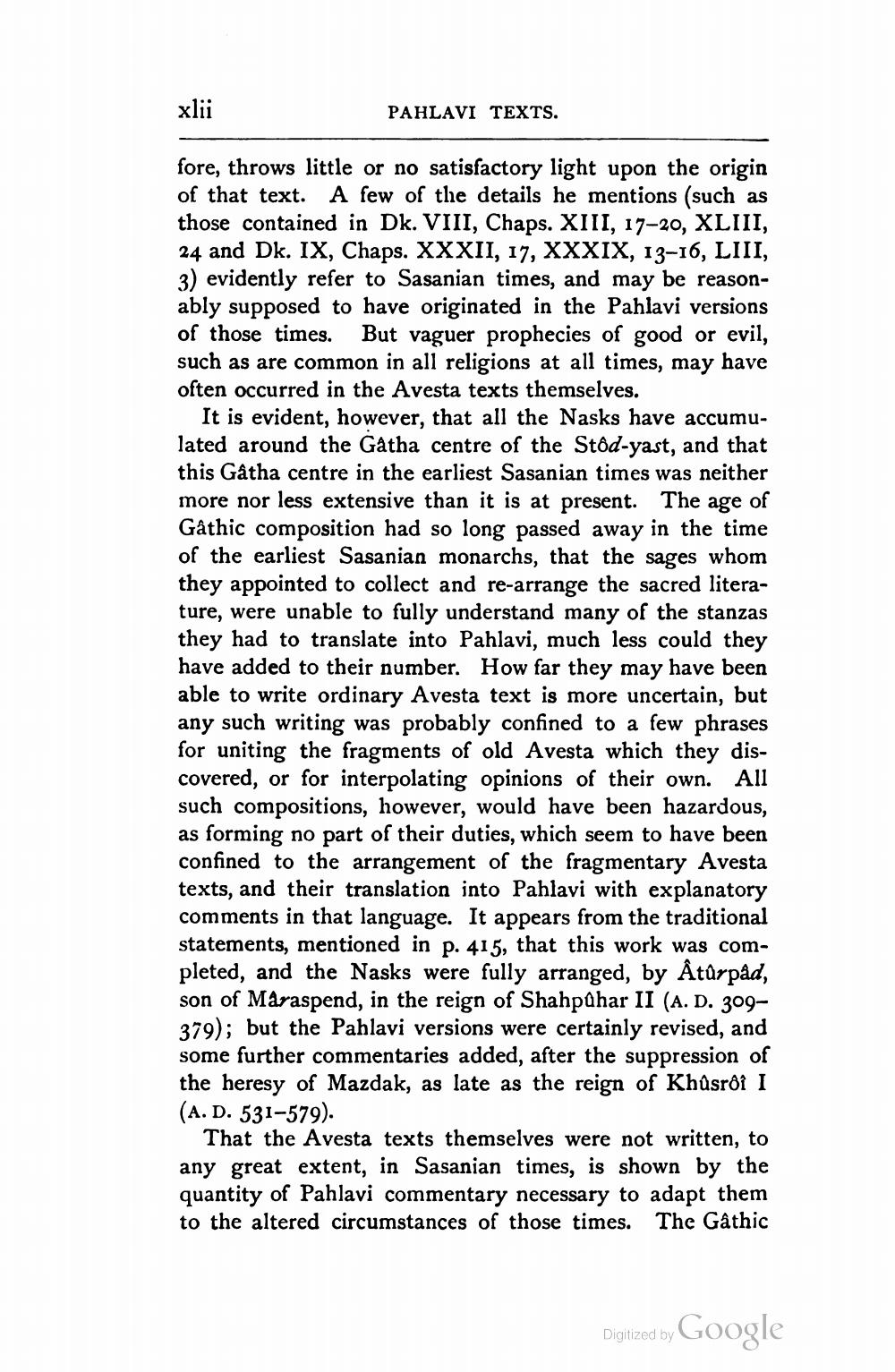________________
xlii
PAHLAVI TEXTS.
fore, throws little or no satisfactory light upon the origin of that text. A few of the details he mentions (such as those contained in Dk. VIII, Chaps. XIII, 17-20, XLIII, 24 and Dk. IX, Chaps. XXXII, 17, XXXIX, 13-16, LIII, 3) evidently refer to Sasanian times, and may be reasonably supposed to have originated in the Pahlavi versions of those times. But vaguer prophecies of good or evil, such as are common in all religions at all times, may have often occurred in the Avesta texts themselves.
It is evident, however, that all the Nasks have accumulated around the Gatha centre of the Stôd-yast, and that this Gâtha centre in the earliest Sasanian times was neither more nor less extensive than it is at present. The age of Gåthic composition had so long passed away in the time of the earliest Sasanian monarchs, that the sages whom they appointed to collect and re-arrange the sacred literature, were unable to fully understand many of the stanzas they had to translate into Pahlavi, much less could they have added to their number. How far they may have been able to write ordinary Avesta text is more uncertain, but any such writing was probably confined to a few phrases for uniting the fragments of old Avesta which they discovered, or for interpolating opinions of their own. All such compositions, however, would have been hazardous, as forming no part of their duties, which seem to have been confined to the arrangement of the fragmentary Avesta texts, and their translation into Pahlavi with explanatory comments in that language. It appears from the traditional statements, mentioned in p. 415, that this work was completed, and the Nasks were fully arranged, by Åtûrpåd, son of Maraspend, in the reign of Shahpahar II (A. D. 309379); but the Pahlavi versions were certainly revised, and some further commentaries added, after the suppression of the heresy of Mazdak, as late as the reign of Khúsrði I (A. D. 531-579).
That the Avesta texts themselves were not written, to any great extent, in Sasanian times, is shown by the quantity of Pahlavi commentary necessary to adapt them to the altered circumstances of those times. The Gathic
Digitized by Google




